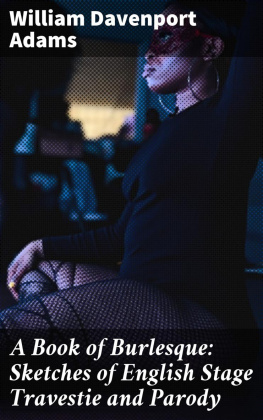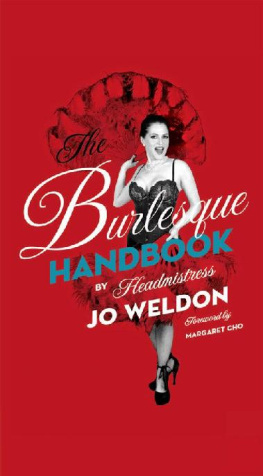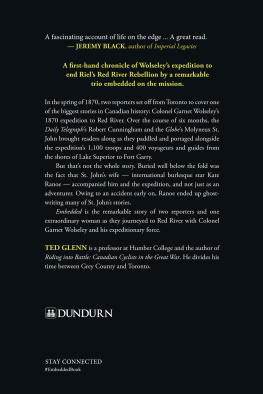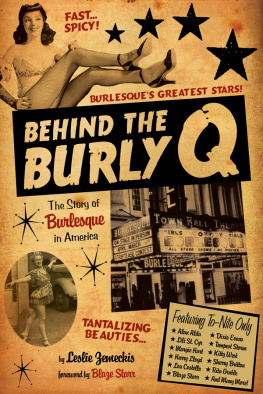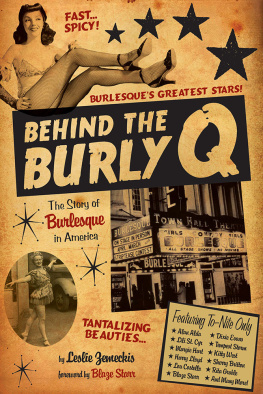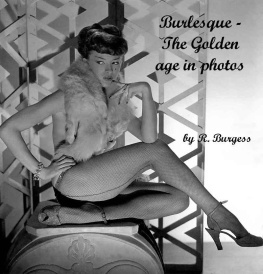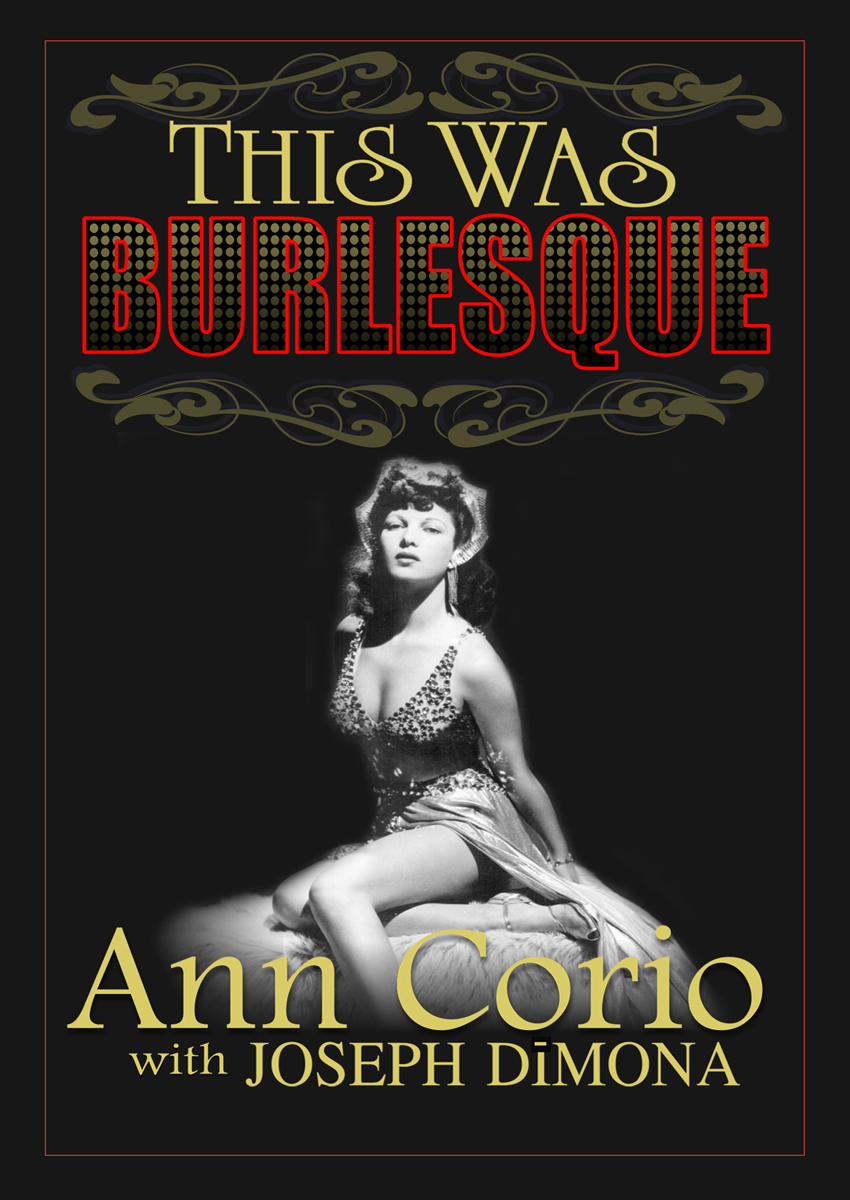This Was Burlesque
Ann Corio
with Joseph DiMona

All rights reserved, including without limitation the right to reproduce this ebook or any portion thereof in any form or by any means, whether electronic or mechanical, now known or hereinafter invented, without the express written permission of the publisher.
Copyright 1968 by Ann Corio and Joseph DiMona
ISBN 978-1-4976-5907-0
This edition published in 2014 by Open Road Integrated Media, Inc.
345 Hudson Street
New York, NY 10014
www.openroadmedia.com

This book is dedicated
to
Michael P. Iannucci,
whose faith, determination, and ingenuity
made possible the show,
This Was Burlesque.
Contents
Setting
the
pattern
It all began with Aristophanes
IS BURLESQUE BAWDY? YES. IS IT LOVABLE ? Yes. Is it durable? Most decidedly yes. Its been with us one hundred years in this country, and its roots go all the way back to ancient Greece.
Few people know the real story of burlesque, and thats one reason Im writing this book. They dont realize that burlesque for centuries has been a legitimate branch of show business. Ill admit its the lowest branch, but thats the limb nearest the people. Its ancestral father was one of the greatest classic play-wrights of all time, Aristophanes.
Aristophanes was the first to satirize people, human tragedies, and contemporary ideas and events. He laughed at the world in his plays, and he made people laugh, too. And thats what burlesque means. It comes from the Italian word burlare , which means to laugh at, to make fun of.
In Lysistrata , for example, the heroine organized a womens peace association (oh, how a modern burlesque comic would love that name). The association was composed of the wives of Athenian warriors, who shut themselves up in the Acropolis away from their husbands until the Peloponnesian War was terminated. What they were saying, two thousand years before the hippies, was, Make love, not war.
Aristophanes freely used puns, gags, and wisecracks in his plays. Whats more, he played up sensual descriptions and introduced the seduction theme into the theatre. The risqu elements that have always been a part of burlesque can also be credited to old Aristophanes, who must have been quite a character around the Acropolis. Where was he during the Peloponnesian War? He wasnt making war.
Burlesque first appeared in the English language in a play entitled The Most Lamentable Comedy and Most Cruel Death of Pyramus and Thisbie, produced in London in 1600. It set the pattern for all the lusty satires and parodies to follow.
Of these, the most famous may be The Beggars Opera , by John Gay. First produced at the Lincolns Inn Theatre in 1727, it apparently tore old London town apart. The Archbishop of Canterbury preached a sermon against it; Sir John Fielding, the Police justice, officially begged the manager not to present it on Saturday evenings, as it would inspire the idle apprentices of London, who see it on their night off, to imitate its heroes thieving deeds. Someone named Dr. Wharton condemned it as the parent of that most monstrous of all absurdities, the comic opera.
Needless to say, with notices like these, the play was a smash; and in 1750 it traveled to the New World. In those days in New York you had to shoulder Indians aside to get into a theatre, but thousands of Americans did. It was presented at a theatre on Nassau Street as a play written in ridicule of the musical Italian drama.
What with one war and another, American playwrights didnt get on the ball until almost seventy-five years later. But when they did, they ran with it. One of the great, little-known talents in the history of the theatre is a playwright named John Brougham. At the time he was called the American Aristophanes.
No wonder. This man had a way with words and a genius for comedy. He delighted in taking Shakespearian classics, as well as current dramas of the time, and burlesquing them. He was so successful that such actors as the great Edwin Booth would often journey downtown to recreate their legitimate roles in a Brougham spoof.
When they didnt, other actors would do the job for them, as an actor named Forrest learned to his regret. Forrest was appearing in a legitimate play uptown, while his burlesque counterpart imitated him downtown. Listen to this report:
As Beppo, made up in a very clever imitation of Forrest as the Gladiator, and enormously padded, he strutted about the stage for many moments, entirely unconscious of a large carving fork stuck into the sawdust which formed the calf of his gladiatorial leg. His look of agony and his roar of anguishperfect reflections of Forrests voice and actionwhen his attention was called to his physical suffering made one of the most ludicrous scenes in the whole history of American burlesque.
But Brougham went beyond visual comedy; he was a master of language, too. As a critic writing in Harpers Magazine in 1895 said, Until the fall of the curtain, the scintillations of wit and the thunder of puns were incessant and startling.
The following exchange may give you some idea:
May I ask in the word lie,
What vowel do you use, sir,
I or Y?
Y, sir, or I, sir, search the vowels through And find the one most consonant to you.
Later the King cries:
Sergeant-at-arms, say, what alarms the crowd?
Loud noise annoys us; why is it allowed?
Yes, words were fine, especially in Broughams plays, but the shape of things to come in burlesque was found not on a printed pagebut on a horse. On June 7, 1861, Adah Isaacs Menken, a girl with a beautiful figure, appeared in tights while strapped to a living horse in a play based on Byrons poem, Mazeppa.
Scandal! Preachers piously fulminated against loose women in tights (a contradiction, if you ask me). But Adah had brought something new to burlesque, and it didnt take theatrical promoters long to grasp the idea. Soon there appeared the most notorious burlesque of its time, The Black Crook, featuring the Amazon Parade of legs.
This was almost too much for one of the critics of the day. All for what? he wrote. A display of brilliant costumes, or rather an absence of them; crowds of girls set in array and posturing so as to bring out every turn and play of the limbs. Throughout it was simply a parade of indecency artistically placed upon the stage, with garish lights to quicken the senses and inflame the passions. Sounds to me as if that critic was quickened and inflamed himself. I can always tell.
The Beggars Opera, John Brougham, Adah Isaacs Menken, and The Black Crook were just prelude. Burlesque in America at the time was just a small offshoot of show business. The girl whom everyone credits with the establishment of burlesque as an American institution was about to arrive. She came from England, and her name was Lydia Thompson. One hundred years later, I want to salute Lydia and her gorgeous, bouncy British Blondes. Without her, I might not be writing this book today, for there would be no story to write.
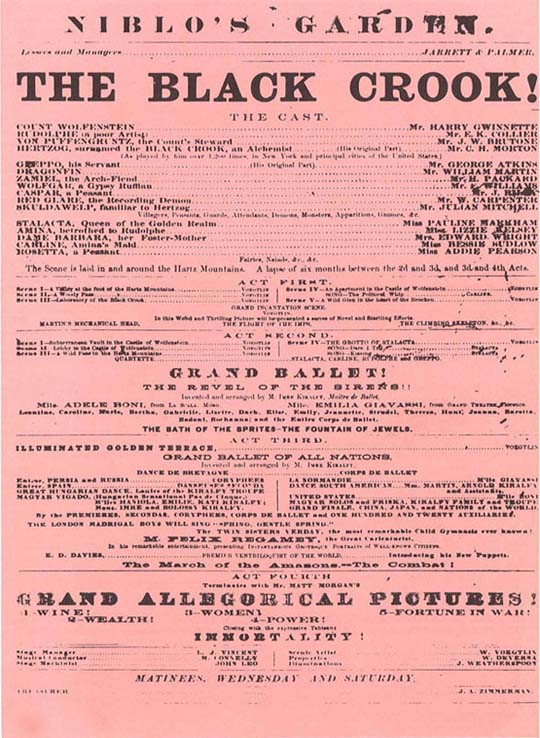
Here come the British Blondes!
WEEKS BEFORE LYDIA THOMPSONS ARRIVAL , the anticipation was building. She would be the first English actress in history to bring to the United States an entire company of her own. And what a company: beautiful, flirtatious blondes who revealed everything you could reveal within the framework of tights; a battery of young blondes, staring eagerly across the footlights, acting in lusty plays in which sex was the theme. Whoopee! Americansespecially those with bald headscould hardly wait.




